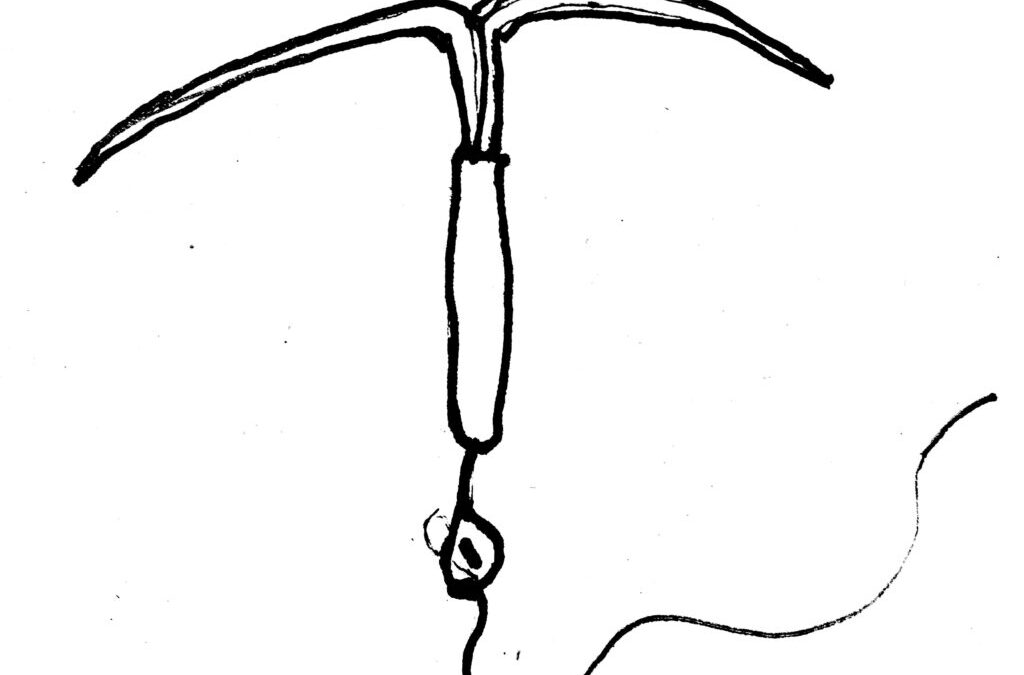
by Dr. Talia Marcheggiani, ND | Jul 31, 2015 | cancer, Detoxification, Endocrinology, Fertility, Health, Hormones, Preventive Medicine, Sexual Health, Weight Loss, Women's health
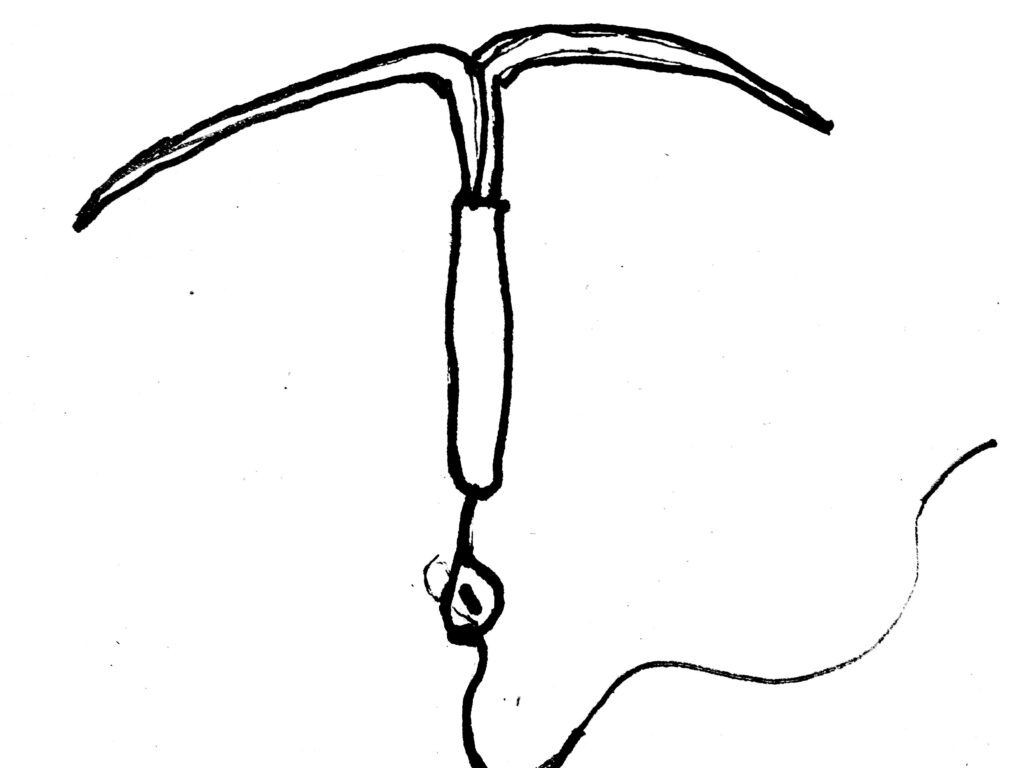
I’ve been noticing a trend in my practice, which places an emphasis on women’s hormonal health and mental health. Many women are consulting me for treatment of anxiety and panic attacks that have shown up in addition to other hormonal symptoms: painful periods, PMS, headaches, loss of libido, acne and weight gain. It just so happens that these women have also, for either treatment or contraception purposes, inserted a Mirena IUD, an intrauterine device that secretes small amounts of progestin (a synthetic form of progesterone) into the uterus.
The monograph for Mirena—produced and supplied by Bayer Pharmaceuticals—claims that Mirena is 99% effective for preventing unplanned pregnancy. Bayer informs us that Mirena can last in the uterus for up to 5 years and eliminates the need for daily pill-popping or condom use (although it does not protect against STIs). In addition, it is also an effective treatment for heavy menstrual bleeding. This explains why many women with gynaecological conditions, like endometriosis or fibroids, are recommended the Mirena IUD for alleviating symptoms of painful and excessive menstrual flow. Bayer’s claims, which are backed by evidence, make sense, especially when we consider that fibroids and endometriosis are estrogen-dominant conditions—adding more progesterone to the mix should help to “balance” things out. Incorporating a progestin-secreting device that acts on the uterus can help oppose the estrogen dominance that exacerbates the symptoms of these conditions.
The problem (of course there’s a problem, we’re talkin’ Pharma here) with Mirena is this: while the progestin exerts its effects locally, it does not act on the rest of the body. This may not be a “problem” with a capital P, if we understand that oral contraceptives that contain high progesterone are usually responsible for the “crazy” feelings women have when going on birth control—a lot of the “irritability”, weight gain, water retention and depression that women experience premenstrually is due to high levels of synthetic progesterone. However, we also know that progesterone, whose primary job is to maintain the uterine lining during pregnancy, has positive systemic effects. These effects include promoting mental relaxation and opposing estrogen dominance symptoms, which include weight gain, anxiety, panic attacks, fatigue, PMS, breast tenderness, acne, fibrocystic breast changes, cervical dysplasia, infertility, risk for certain cancers including breast cancer and cervical cancer and worsening of endometriosis and fibroids, which ironically happen to be the two conditions that the Mirena IUD is prescribed to treat.
Estrogen dominance is often not about having high levels of estrogen, but normal estrogen levels with insufficient progesterone to oppose some of its effects. Progesterone deficiency can look like estrogen dominance, when we examine a patient’s symptoms.
In my practice as of late, I’ve had a stream of women presenting with anxiety, panic attacks and heart palpitations that I strongly suspect are hormone-related. When I send them for blood work or salivary hormone tests I find that their progesterone levels are very low. They also may have symptoms of painful menstrual periods, stubborn weight gain and acne. And, you guessed it, all of them have the Mirena IUD. Many patients vaguely remember that symptoms began to rear their ugly heads, or worsen, after they got the IUD. Other colleagues have commented on observing the same trend in their own practices. Could the phenomena be linked?
There are several possible explanations for the progesterone deficiency/estrogen dominance phenomenon in clinical practice—these include, but are not limited to, chronic stress, vitamin deficiencies, impaired liver function or bowel function and exposure to exogenous estrogens such as BPA (found in plastic bottles, personal care products, the lining of tin cans and receipts, to name a few). Yet it seems that Mirena is a common factor in the majority of the cases I’m seeing. The possible reason is that, although Mirena provides progestins to the uterus, its hormones do not reach progesterone receptors in other areas of the body, for example the breasts, adipose tissue or brain, where progesterone normally will have an effect. While oral contraceptives act by preventing ovulation (some women don’t even menstruate while using the IUD), which in turn prevents the secretion of natural progesterone from the corpus luteum (formed in the ovary after ovulation), many of them also supply a dose of synthetic progesterone. Since the Mirena IUD only secretes progesterone to local tissues and therefore only acts at local receptors, it may be turning off the body’s ability to secrete natural progesterone—negative feedback loops might instruct the pituitary gland and the adrenal glands to stop making the body’s own progesterone.
As an naturopathic doctor, it can be hard to know where to proceed! I can try to balance hormones naturally with herbs that help promote an increase in progesterone production. I can also treat the adrenal glands so that they are able to produce more natural progesterone, rather than favouring cortisol production. However, not only might my efforts be fruitless, they may interact with the IUD’s contraceptive effects. I can try to promote the healthy excretion of estrogens by promoting liver detoxification and colon elimination, but the practice calls to mind an image of cleaning a dirty river while sewage pipes deposit their waste into it. How can my patients help their bodies clear out excess hormones while we both ignore the fact that the cause of hormonal deficiency may still persist?
While I sympathize with the allure of a hassle-free family-planning method and relief from the symptoms of heavy and painful periods, I can’t help but shudder when I see the often debilitating anxiety that my patients who use Mirena are presenting with. With regards to birth control, I have written in the past about healthy OCP practices and finding the right hormonal fit. There are also other, natural methods of family planning available, copper IUDs (however, there are other issues with the secretion of copper to local uterine tissue as well) and physical barriers. While other options may not be as convenient, or even as effective, they may promote a healthier hormone balance and improved overall health. It’s worth having a conversation with your doctor about options.
With regards to treating heavy menstrual bleeding with Mirena, natural alternative solutions are abundant! Naturopathic medicine offers a large array of therapies and treatment protocols aimed at treating the root cause: promoting healthy detoxification and elimination, supporting adrenal glands and balancing hormones through diet and nutrition. Not only does Mirena pose the potential for furthering hormonal imbalances, it covers up and even potentially exacerbates the underlying cause of why the symptom is happening in the first place, which is likely a case of estrogen dominance.
For treatment of hormonal conditions—endometriosis, fibroids, heavy and painful menstrual bleeding, PCOS, acne, weight gain and so on—I encourage you to explore natural options. In the meantime, I’ll have to figure out how to address my patients’ concerns while navigating against the current of synthetic hormones.
Want to balance your hormones, energy and mood naturally? Check out my 6-week foundational membership program Good Mood Foundations. taliand.com/good-mood-learn
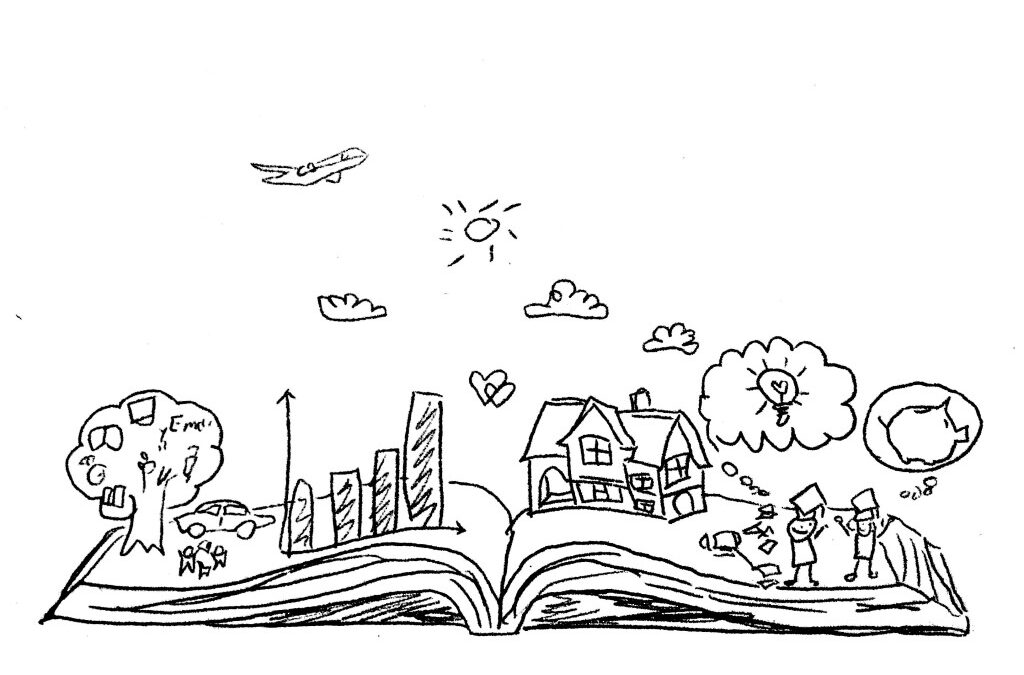
by Dr. Talia Marcheggiani, ND | Jul 20, 2015 | Art Therapy, Community, Creativity, Docere, Education, Emotions, Empathy, Finding yourself, Healing Stories, Health, Medicine, Mental Health, Mind Body Medicine, Mindfulness, Narrative Therapy, Philosophy, Politics, Psychology, Relationships, Self-reflection, Treating the Cause, Volunteering
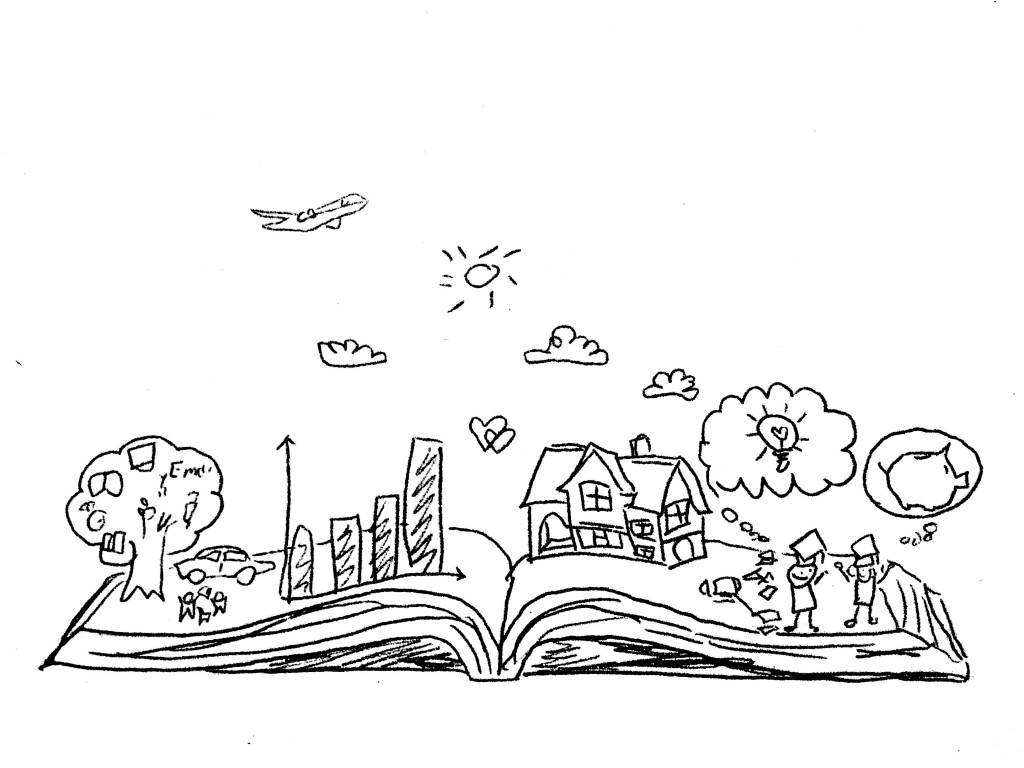 As a child, I was obsessed with stories. I wrote and digested stories from various genres and mediums. I created characters, illustrating them, giving them clothes and names and friends and lives. I threw them into narratives: long stories, short stories, hypothetical stories that never got written. Stories are about selecting certain events and connecting them in time and sequence to create meaning. In naturopathic medicine I found a career in which I could bear witness to people’s stories. In narrative therapy I have found a way to heal people through helping them write their life stories.
As a child, I was obsessed with stories. I wrote and digested stories from various genres and mediums. I created characters, illustrating them, giving them clothes and names and friends and lives. I threw them into narratives: long stories, short stories, hypothetical stories that never got written. Stories are about selecting certain events and connecting them in time and sequence to create meaning. In naturopathic medicine I found a career in which I could bear witness to people’s stories. In narrative therapy I have found a way to heal people through helping them write their life stories.
We humans create stories by editing. We edit out events that seem insignificant to the formation of our identity. We emphasize certain events or thoughts that seem more meaningful. Sometimes our stories have happy endings. Sometimes our stories form tragedies. The stories we create shape how we see ourselves and what we imagine to be our possibilities for the future. They influence the decisions we make and the actions we take.
We use stories to understand other people, to feel empathy for ourselves and for others. Is there empathy outside of stories?
I was seeing R, a patient of mine at the Yonge Street Mission. Like my other patients at the mission health clinic, R was a young male who was street involved. He had come to see me for acupuncture, to help him relax. When I asked him what brought him in to see me on this particular day, his answer surprised me in its clarity and self-reflection. “I have a lot of anger,” He said, keeping his sunglasses on in the visit, something I didn’t bother to challenge.
R spoke of an unstoppable rage that would appear in his interactions with other people. Very often it would result in him taking violent action. A lot of the time that action was against others. This anger, according to him, got him in trouble with the law. He was scared by it—he didn’t really want to hurt others, but this anger felt like something that was escaping his control.
We chatted for a bit and I put in some acupuncture needles to “calm the mind” (because, by implication, his mind was not currently calm). After the treatment, R left a little lighter with a mind that was supposedly a little calmer. The treatment worked. I attributed this to the fact that he’d been able to get some things off his chest and relax in a safe space free of judgment. I congratulated myself while at the same time lamented the sad fact that R was leaving my safe space and re-entering the street, where he’d no doubt go back to floundering in a sea of crime, poverty and social injustice. I sighed and shrugged, feeling powerless—this was a fact beyond my control, there wasn’t anything I could do about it.
The clinic manager, a nurse practitioner, once told me, “Of course they’re angry. These kids have a lot to be angry at.” I understood theoretically that social context mattered, but only in the sense that it posed an obstacle to proper healing. It is hard to treat stress, diabetes, anxiety and depression when the root causes or complicating factors are joblessness, homelessness and various traumatic experiences. A lot of the time I feel like I’m bailing water with a teaspoon to save a sinking ship; my efforts to help are fruitless. This is unfortunate because I believe in empowering my patients. How can I empower others if I myself feel powerless?
I took a Narrative Therapy intensive workshop last week. In this workshop we learn many techniques for empowering people and healing them via the formation of new identities through storytelling. In order to do this, narrative therapy extricates the problem from the person: the person is not the problem, the problem is the problem. Through separating problems from people, we are giving our patients the freedom to respond to or resolve their problems in ways that are empowering.
Naturopathic doctors approach conditions like diabetes from a life-style perspective; change your lifestyle and you can change your health! However, when we fail to separate the patient from the diabetes, we fail to examine the greater societal context that diabetes exists in. For one thing, our culture emphasizes stress, overwork and inactivity. The majority of food options we are given don’t nourish our health. Healthy foods cost more; we need to work more and experience more stress in order to afford them. We are often lied to when it comes to what is healthy and what is not—food marketing “healthwashes” the food choices we make. We do have some agency over our health in preventing conditions like diabetes, it’s true, but our health problems are often created within the context in which we live. Once we externalize diabetes from the person who experiences it, we can begin to distance our identities from the problem and work on it in creative and self-affirming ways.
Michael White, one of the founders of Narrative Therapy says,
If the person is the problem there is very little that can be done outside of taking action that is self-destructive.
Many people who seek healthcare believe that their health problems are a failure of their bodies to be healthy—they are in fact the problem. Naturopathic medicine, which aims to empower people by pointing out they can take action over their health, can further disempower people when we emphasize action and solutions that aim at treating the problems within our patients—we unwittingly perpetuate the idea that our solutions are fixing a “broken” person and, even worse, that we hold the answer to that fix. If we fail to separate our patients from their health conditions, our patients come to believe that their problems are internal to the self—that they or others are in fact, the problem. Failure to follow their doctor’s advice and heal then becomes a failure of the self. This belief only further buries them in the problems they are attempting to resolve. However, when health conditions are externalized, the condition ceases to represent the truth about the patient’s identity and options for healing suddenly show themselves.
While R got benefit from our visit, the benefit was temporary—R was still his problem. He left the visit still feeling like an angry and violent person. If I had succeeded in temporarily relieving R of his problem, it was only because I had acted. At best, R was dependent on me. At worst, I’d done nothing, or, even worse, had perpetuated the idea that there was something wrong with him and that he needed fixing.
These kids have a lot to be angry at,
my supervisor had said.
R was angry. But what was he angry at? Since I hadn’t really asked him, at this time I can only guess. The possibilities for imagining answers, however, are plentiful. R and his family had recently immigrated from Palestine, a land ravaged by war, occupation and racial tension. R was street-involved, living in poverty in an otherwise affluent country like Canada. I wasn’t sure of his specific relationship to poverty, because I hadn’t inquired, but throughout my time at the mission I’d been exposed to other narratives that may have intertwined with R’s personal storyline. These narratives included themes of addiction, abortion, hunger, violence, trauma and abandonment, among other tragic experiences. If his story in any way resembled those of the other youth who I see at the mission, it is fair to say that R had probably experienced a fair amount of injustice in his young life—he certainly had things to be angry at. I wonder if R’s anger wasn’t simply anger, but an act of resistance against injustice against him and others in his life: an act of protest.
“Why are you angry?” I could have asked him. Or, even better, “What are you protesting?”
That simple question might have opened our conversation up to stories of empowerment, personal agency, skills and knowledge. I might have learned of the things he held precious. We might have discussed themes of family, community and cultural narratives that could have developed into beautiful story-lines that were otherwise existing unnoticed.
Because our lives consist of an infinite number of events happening moment to moment, the potential for story creation is endless. However, it is an unfortunate reality that many of us tell the same single story of our lives. Oftentimes the dominant stories we make of our lives represent a problem we have. In my practice I hear many problem stories: stories of anxiety, depression, infertility, diabetes, weight gain, fatigue and so on. However, within these stories there exist clues to undeveloped stories, or subordinate stories, that can alter the way we see ourselves. The subordinate stories of our lives consist of values, skills, knowledge, strength and the things that we hold dear. When we thicken these stories, we can change how we see ourselves and others. We can open ourselves up to greater possibilities, greater personal agency and a preferred future in which we embrace preferred ways of being in the world.
I never asked R why the anger scared him, but asking might have provided clues to subordinate stories about what he held precious. Why did he not want to hurt others? What was important about keeping others safe? What other things was he living for? What things did he hope for in his own life and the lives of others? Enriching those stories might have changed the way he was currently seeing himself—an angry, violent youth with a temper problem—to a loving, caring individual who was protesting societal injustice. We might have talked about the times he’d felt anger but not acted violently (he’d briefly mentioned turning to soccer instead) or what his dreams were for the future. We might have talked about the values he’d been taught—why did he think that violence was wrong? Who taught him that? What would that person say to him right now, or during the times when his anger was threatening to take hold?
Our visit might have been powerful. It might have opened R up to a future of behaving in the way he preferred. It might have been life-changing.
It definitely would have been life-affirming.
Very often in the work we do, we unintentionally affirm people’s problems, rather than their lives.
One of the course participants during my week-long workshop summed up the definition of narrative therapy in one sentence,
Narrative therapy is therapy that is life-affirming.
And there is something very healing in a life affirmed.
More:
The Narrative Therapy Centre: http://www.narrativetherapycentre.com/
The Dulwich Centre: http://dulwichcentre.com.au/
Book: Maps of Narrative Practice by Michael White
by Dr. Talia Marcheggiani, ND | Jun 9, 2015 | Art, Balance, doctor as teacher, Evidence Based Medicine, Medicine, Mind Body Medicine, Naturopathic Philosophy, Naturopathic Principles, Patience, Patients, Philosophy
In most service industries, there are certain guarantees. If you go to a restaurant, your soup is guaranteed. At the GAP, you will get a pair of chinos, guaranteed. In lots of instances, you get what you are paying for and in most cases, you get to see if before you hand over your credit card—a coffee, a massage. In many cases, if you’re not satisfied, you can get your money back—guaranteed.
This is not the case in medicine. We cannot legally guarantee results. There are no guarantees.
Everybody and every body is different. Contrary to what it might seem like in our age of paralyzing fear of uncertainty, no one has all, or even most, of the answers.
Dr. Google makes it seem like we do, though.
When I see a new patient who is worried about their health and their future, I want to be able to promise them. I want nothing more than to say, “these breathing exercises will eliminate your anxiety, just like you asked for: poof! gone.”
I want to guarantee things.
I want to tell someone that, if they follow my instructions, they’ll never have another hypertensive emergency again. I want to, but I can’t. No one can. And our job is not to guarantee. It is to serve.
A $10,000 bag of chemotherapy pumped into your arm will not guarantee that the cancer goes into remission no matter how many studies show it has an effect. I can’t promise you’ll get pregnant, even though I’m doing my best, you’re doing your best and science is doing its best.
That’s all I can guarantee: that I will try my very best.
I can be your researcher, teasing out the useful scientific information from a sea of garbage and false promises—false guarantees from those who have no business guaranteeing anything. I can provide my knowledge, culminated from years of study and practice and life. I can sit with you while you cry and hear you share your story. I can let you go through your bag of supplements, bought in a whirlwind of desperation, and tell you what is actually happening in your body—something that doctor didn’t have time to explain. I have time to spend with you. We can have a real conversation about health. I can also make recommendations based on my clinical experience, research and millenia of healing practices. These recommendations will certainly help—virtually everyone sees some kind of benefit—but I can’t guarantee that either.
I watched a webinar on probiotics recently. The webinar sent me into a spiral of existential probiotic nothingness. I’ve been prescribing probiotics for years. I’ve seen benefits from them with my own eyes. Patients have reported great things after taking them and I feel better when I take them: my stomach gets flatter, things feel smoother, my mood gets lighter. Probiotics are wonderful. However, according to the research that was being presented by this professional, which he’d meticulously collected and organized, many things we thought about probiotics aren’t true. I’d have to change my whole approach when it came to probiotics, prescribing certain strains for certain conditions where they’d seen benefit. I remember feeling hard-done by by the supplement companies and the education I’d gotten at my school. How could we be so off base on this basic and common prescription?
At the same time, some skeptics were harassing me on Twitter, telling me that I’d wasted 4 years, that naturopathic medicine is useless and doesn’t help people. Besides having helped numerous people and having been healed myself, their words got to me. What if everything I know is as off-base as my previous knowledge on probiotics was?
The very next day, I called a patient to follow up with her. She’d kind of fallen off the radar for a while. She was happy to hear from me. I asked her how she was feeling, if she’d like to rebook. “I don’t need to rebook,” She told me, excitedly, “I’m completely better!”
After one appointment.
I was astounded and intrigued. Of course, we expect people to get better, but it takes time to heal, and I rarely go gung-ho on the first appointment, there was still lots left in my treatment plan for her. She’d been experiencing over seven years of digestive pain, debilitating fatigue, life-changing and waist-expanding cravings for sugar. It takes a while to reverse seven years of symptoms. It takes longer than a couple of weeks. But her symptoms were gone. She felt energized, her mood was great and she’d lost a bit of weight already. She no longer had cravings.
And she’d just started on one remedy.
Which was, you guess it, probiotics.
Sure, you might think. Maybe it wasn’t the probiotics, maybe she would have just gotten better on her own. Possible, but unlikely. She’d been suffering for years.
Ok, then, you say, maybe it was a placebo effect. Maybe it wasn’t the actual probiotics. Again, it’s possible. She’d tried other therapies before, which hadn’t worked, however and she “believed” in them just as much as the probiotic. And the probiotic made her better.
The point is this: we don’t know. Science is magical. People are magical. Medicine, which combines science with people, is the most magical of all. There are no guarantees.
The point is that anything can make anyone feel better: a good cry, a $10,000 bag of chemotherapy, journalling for 12 weeks or popping a probiotic. Some things have more research behind them. Some things we’ve studied and so we know some of the mechanisms for why things work. But we still have a lot of why’s and we always will. Everybody and every body is different. No two people or two conditions should receive the exact same protocol or supplement or IV bag or journalling exercise or cry-fest. We have no guarantees what will work or what will make you feel better. Just some research papers, some experience, maybe the odd dash of intuition or interpersonal connection and a firm resolve to want our patients to get better. And that’s a guarantee.
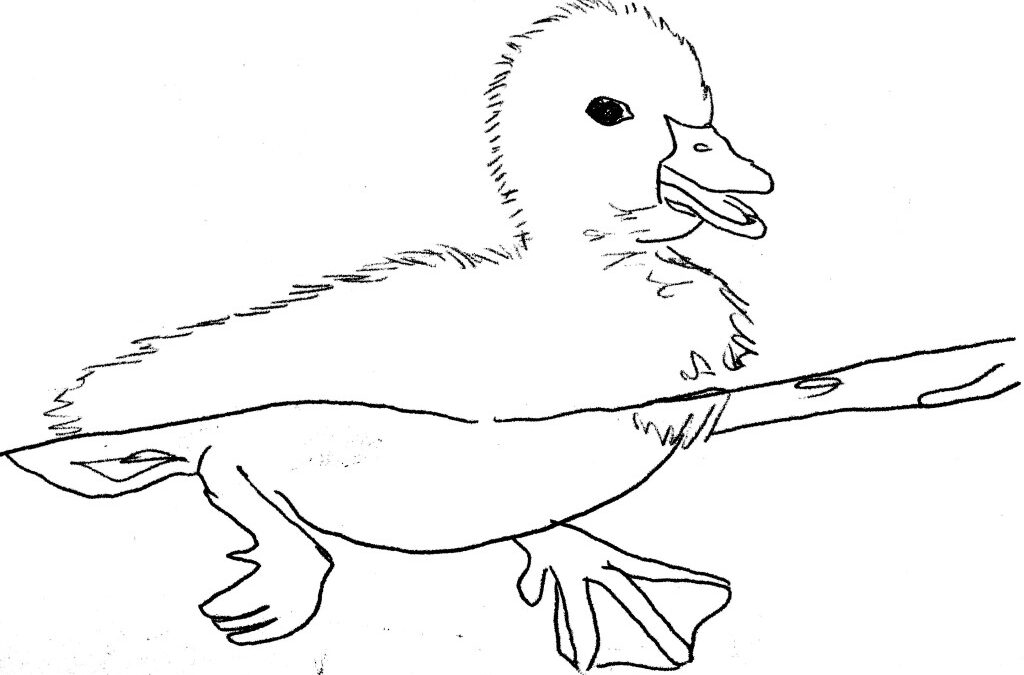
by Dr. Talia Marcheggiani, ND | Jun 8, 2015 | Canadian College of Naturopathic Medicine, Clinical Science, Evidence Based Medicine, Preventive Medicine, Professional Development, Research, Robert Schad Naturopathic Clinic, Science
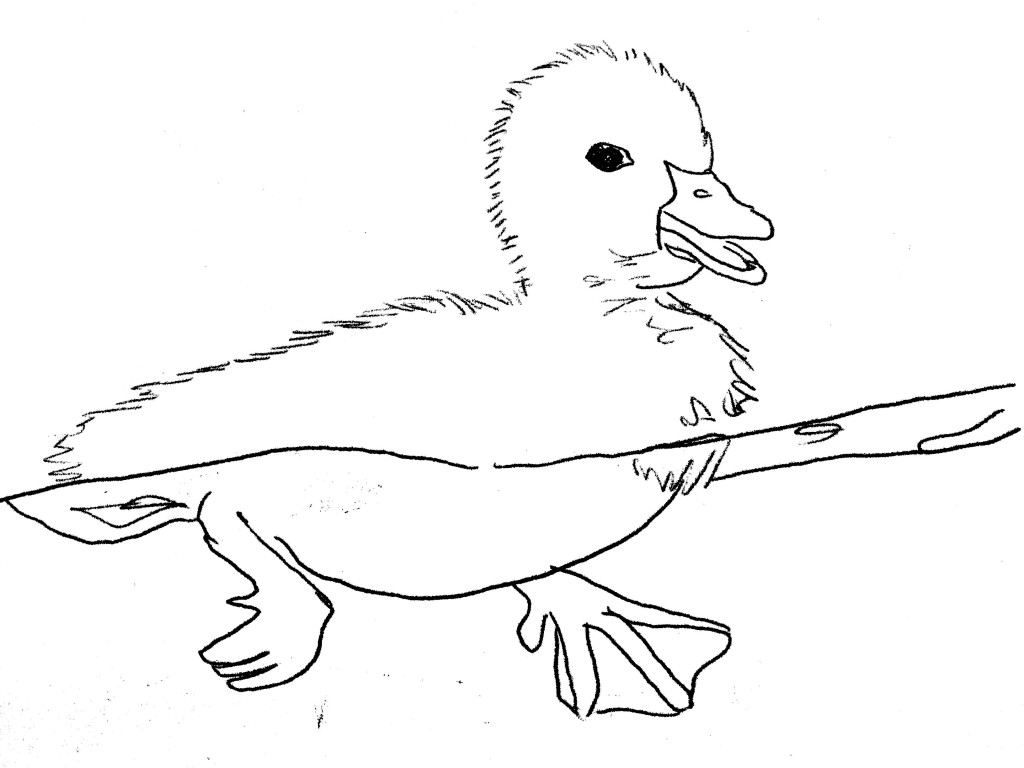 Sigh… I just finished reading a rather annoying article in the Globe and Mail (don’t even bother to click and add more Google street-cred, seriously) that doesn’t really warrant a response but… here we go. It’s my day off.
Sigh… I just finished reading a rather annoying article in the Globe and Mail (don’t even bother to click and add more Google street-cred, seriously) that doesn’t really warrant a response but… here we go. It’s my day off.
The article was written by one Carly Weeks, who doesn’t seem to have a very positive view of naturopathic doctors. I don’t know Carly and have no idea about her health history, but I’m going to take a shot in the dark and imagine she hasn’t suffered from chronic eczema.
Let me know how that steroid cream works out for ya, Carly!
But, ad hominem aside, her issue with naturopathic doctors this week(s)—pun intended, aren’t I hilarious—is, what else: we’re a bunch of quacks who use nothing but false therapies and smooth-talking to coax our patients into thinking they feel better. Well, if that worked, I wonder why more healthcare practitioners don’t try copying those moves too. It might save the government some money, which is what, coincidently, naturopathic medicine is already doing and it’s not by false therapies and smooth-talking. (But we do make time for a lot of talking).
The Globe piece begins with a story about how physicians (not naturopaths, for the record) prescribed radioactive water in the 1920’s. It’s a cute and tragic story about limited safety profiles. And other than its juxtaposition in an article about NDs, I’m not sure what the writer’s point was. We don’t use radioactive water to treat anyone. If you want radiation, which is a therapy, a cancer treatment, then you must see an oncologist. Talk about throwing out babies and bathwater.
The article is largely about how naturopathic doctors are moving under a new regulatory board, under the Regulated Health Practitioners Act. This limits our scope compared to that of provinces like BC or certain US states, where naturopathic doctors have been prescribing drugs and even performing minor surgeries safely where it’s warranted.
Here are some facts:
Naturopathic medicine is incredibly safe. We are trained in conventional diagnosis, anatomy, physiology, physical exams, including gynaecological exams, breast exams and digital rectal exams. We have the ability to perform acupuncture in Ontario and give intramuscular injections. With additional training we can provide IV treatments. We are trained to order and interpret labs and to take blood. I will not deny that conventional medicine and pharmaceuticals have saved millions of lives. However, we know that 10,000 yearly deaths in Canada (and 100,000 in the US) are due to pharmaceuticals alone. A year ago I wrote a post talking about the off-label birth control pill Diane-35. Let’s not start comparing safety profiles here.
Naturopathic doctors are highly trained and educated: We have completed a 4-year very rigorous program that includes a 12-month internship where we treat patients in an out-patient facility. In our training we performed over 100 practical and written examinations. After our second and fourth year we complete two licensing exams, which span a course of 5 full days of examinations combined. Ask anyone I know if what I did was easy. Trick question: they wouldn’t know because they didn’t hear from me for the past 5 years–I was studying the WHOLE time. It’s ok, though, because now I know a lot.
Naturopathic medicine is a regulated profession: In order to practice in Ontario naturopathic medical graduates who have passed both licensing exams, must pass a series of board examinations that are both written and practical. We then must enter into a month-long application process, which includes a police background check and character reference check. If I try to delay treatment of an emergent condition or treat an emergent condition with something like homeopathy or acupuncture (effective treatments for other conditions, but not emergent, life-threatening ones), which is something we are often accused of potentially doing, my licence will be removed. It’s not something we do—it’s that simple. We are held accountable and have a lot of responsibility to deliver safe care.
Naturopathic doctors are health experts: In order to complete the naturopathic medical program we complete 1200 hours of clinical training and 3000 hours of classroom training. This does not include study time for our board exams and pursuit of side interests or continuing education credits that are required to maintain licensure. We are trained in nutrition, which many medical professional, including medical doctors, are not. Naturopathic doctors often see patients that have been failed by the conventional medical system, which means we deal with complex cases on a regular basis. This demands that we keep our skills sharp and our knowledge current.
Naturopathic medicine provides the public with an amazing service that patients are willing to pay for: We spent up to two hours at time with our patients, educating them on any topic of their health picture: the medications they’re on that their doctors don’t have time to discuss with them, their health conditions, their prognosis and what else they can do about it. I spent half an hour talking about an STI a patient of mine had been diagnosed with. She’d seen two doctors and a specialist. None of them had talked to her about it. Patients have told me their doctors no longer perform physicals. Well, we do. And, it turns out, people pay for excellent care. Naturopathic medicine provides the much-needed service of patient education, human-centred care and prevention of disease. It’s an excellent complement to an effective whole-person healthcare strategy.
Naturopathic medicine works: I could say more on this but let’s keep it brief: if it didn’t work, people wouldn’t pay for it. The Globe and Mail, more than anyone should know to “let The Market speak.” (Amiright?) I lied, I will say more. If you don’t think naturopathic medicine works, then call my patients who no longer have chronic pain or allergies or chronic constipation. Ask my patient who couldn’t conceive how her daughter is doing. Blah blah, we help people.
Naturopathic doctors prefer to work in collaboration with other healthcare professionals: Ideally each patient should be managed by a healthcare team. When I start seeing a new patient I immediately establish a relationship with his or her medical doctor. I refer out for labs and to specialists if necessary. Medicine should be integrative, not alternative. Patients shouldn’t be forced to choose.
In addition to accusing us of being a bunch of unsafe quacks, the author writes, “Ontario should have created a regulatory system based on the principle of evidence first.” So, there you have it. Only medicine that is based in evidence should be regulated by the province.
Wow, what a ridiculous statement made by someone who I imagine knows little to nothing about how medicine and so-called “evidence” works.
Firstly, there is more than one type of evidence. In fact, evidence is a hierarchy. At the bottom we have things like clinical case reports or expert opinion, what my friends the skeptics love to call “anecdotal evidence.” Sigh. If you’ve seen something work, you keep doing it. It’s not the best evidence we have, but it’s still evidence. The better forms of evidence, randomized control trials, are being done on naturopathic therapies and naturopathic therapies have been found to hold steady. Actually, many of the therapies we prescribe are done precisely because there is evidence to support it: fish oil for depression and bipolar disorder? Inositol for fertility in patients with PCOS? Evidence, evidence, evidence.
Secondly, only 10% of medical guidelines are based on the type of “evidence” that our friend Carly Weeks is likely referring to: the Randomized Control Trial, which involves comparing two groups: a treatment group to an inactive group that gets something like a placebo. Well, it turns out, we just don’t have that much “evidence” of this sort to dictate what happens in medicine. A tourniquet for a bleeding wound? Using general anesthetic rather than nothing? These things haven’t been compared against placebo. What is the other 90% of medicine based on? Expert opinion: a nice mixture of clinical expertise, intuition, common-sense, “what the heck, might as well try it it couldn’t hurts” and research. I don’t see Carly questioning the use of SSRI for mild and moderate depression or beta-blockers to prevent cardiac events as a result of high blood pressure, both of which have “no evidence” to support their use. Nope, just crickets when it comes to those topics.
Thirdly, the father of EBM, or Evidence Based Medicine, himself, Dave Sackett, said, “Good doctors use both individual clinical expertise and the best available external evidence, and neither alone is enough. Without clinical expertise, practice risks becoming tyrannized by evidence, for even excellent external evidence may be inapplicable to or inappropriate for an individual patient.” (Emphasis mine). Individual clinical expertise from both modern and traditional medicine, the best available external evidence and tailoring treatments to individuals patients needs and preferences? Sound like naturopathic medicine to me.
Naturopathic medicine is safe and effective. We have a patient-centred approach and offer wonderful service for the cost, which is often covered by insurance benefits. Naturopathic doctors take the time to listen to your story and educate you on what is happening in your own body. We treat the root cause of your condition, rather than masking symptoms. We are highly-trained healthcare professionals and we are regulated. Soon we will be moving to different regulation. However, the government will be removing some of the rights we’ve had, which include ordering certain lab tests that we’ve safely ordered for years. If you use or support naturopathic medicine, please click the link to sign the petition to maintain the current naturopathic scope of practice in Ontario and support safe and effective natural healthcare for all Ontarians.
Quack.

by Dr. Talia Marcheggiani, ND | May 24, 2015 | Art, Balance, Canadian College of Naturopathic Medicine, Creativity, Education, Exercise, Family, Finding yourself, Happiness, Healing Stories, Health, Ideal You, Letting Go, Listening, Medicine, Meditation, Mental Health, Mind Body Medicine, Mindfulness, Motivation, Patience, Personal, Psychology, Relationships, Self-care, Self-reflection, Stress
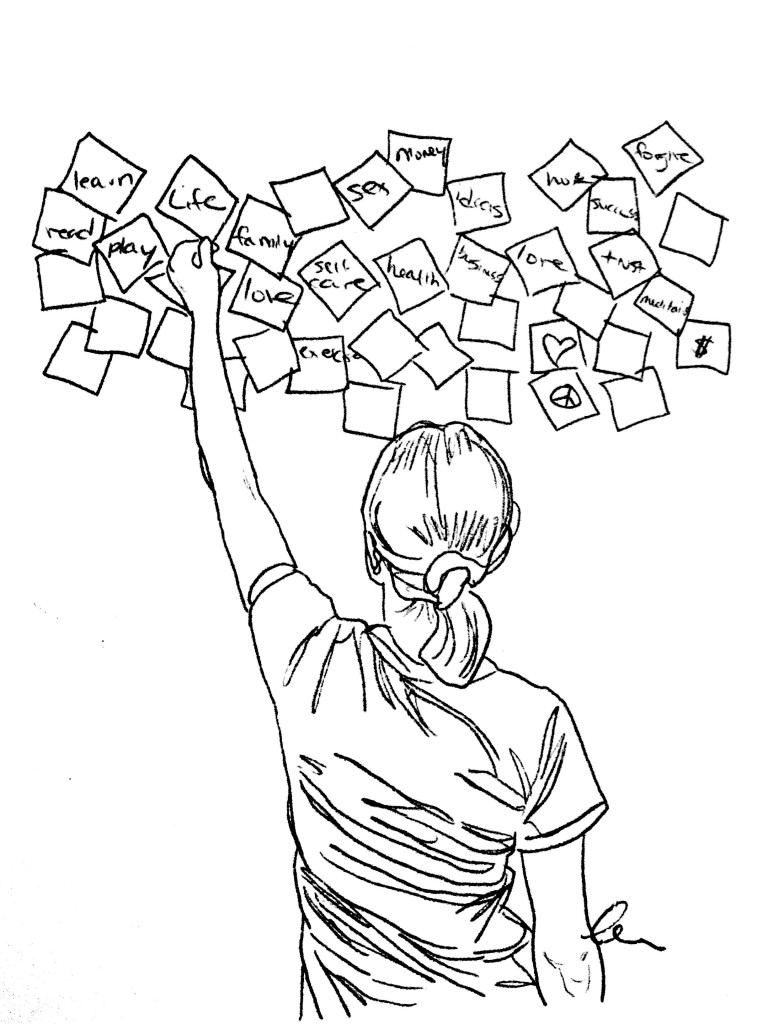 According to James Altucher, author and entrepreneur, it is possible to reinvent yourself in 5 years. In his book, The Power of No, he tells us how to reinvent our lives by first saying a big, fat No to all the things that don’t serve us—toxic friendships and relationships, stagnant 9-5’s, harmful behaviours, negative thought patterns and, well, just things we simply don’t want to do—in order to free up our lives for greater happiness, abundance and creativity.
According to James Altucher, author and entrepreneur, it is possible to reinvent yourself in 5 years. In his book, The Power of No, he tells us how to reinvent our lives by first saying a big, fat No to all the things that don’t serve us—toxic friendships and relationships, stagnant 9-5’s, harmful behaviours, negative thought patterns and, well, just things we simply don’t want to do—in order to free up our lives for greater happiness, abundance and creativity.
It is now the end of May. For me, May has been a month of reinvention. For the past 10 years it has been the month of closing and good-byes, specifically the end of the school year. The Canadian College of Naturopathic Medicine class of 2015 has graduated, as I did last year. Last week my Facebook feed was infiltrated with pictures of flowers, long black gowns and tearfully heartfelt thank-yous to the friends and family that got my colleagues through their gruelling 4 years of naturopathic medical education. Last year that was me—I remember the black gowns, the face-ache from smiling, drinking a little too much at grad formal and winning an award (“Most Likely to Write a Best Seller”—complete with misspelling of “bestseller”) while eating Portuguese chicken at my house afterwards with my friend F and his family. This year, one year later, I watch these events from afar. May 2014 offered new beginnings and chance for reinvention. I was dating, enjoying the sunshine, looking forward to a trip to India, looking forward to beginning a practice as a naturopathic doctor. Mostly, last May was about the death of one life—that of a naturopathic student—and the birth of a new one: a complete reinvention.
This year the rest of my life stretches before me like one long expansive road. My career is underway. My dating life is stagnant. The next steps are more like small evolutions rather than massive, monumental milestones. I most likely will not don a black gown again, but I can reinvent myself by following the 20 steps below. I can always check back into these practices when I’m feeling stuck, alone or afraid. When life is not going my way, there is always a chance to begin a reinvention of some sort. And, I remind myself, my current reinvention is likely well underway. Since I graduated last May, I have been in the process of reinventing: just 4 more years left until I complete my obligatory 5. While 4 years sounds like a long time, I know from experience that 4-year cycles turn over within the blink of an eye.
What stage are you on in your own personal reinvention? Wherever you are, follow these steps to reinvent yourself:
1) Say no. Say no to all the things that you don’t want to do. Say no to things that cause you harm: emotional harm, mental harm, physical harm, loss of time, loss of money, loss of sleep. We need to say no first before we can free up the time and energy to say yes to the things that we actually want. In fact, say “no” to all the things you aren’t saying “F#$% YES!” to. Read this article for more information.
2) Re-examine your relationships. Who doesn’t make you feel good? Who makes you doubt yourself? Who do you feel will reject you if you act like your true self around them? Gracefully begin to distance yourself from these relationships. You might feel lonely for some time, but loneliness is sometimes a good thing.
3) Clear out your junk. Get rid of everything you don’t use, don’t like and don’t need. Marie Kondo, in the Life-changing Magic of Tidying Up, tells us to donate, trade, sell or dispose of everything we own that doesn’t bring us joy. I think that that is a wonderful litmus test to decide what we should be holding on to. Personally, one thing that did not bring me joy was an awful old desk in my room. It was uncomfortable and ugly. I replaced it with a free desk someone I knew was throwing away. I also donated 7 garbage bags of things: books, clothes and keepsakes from when I was a child. Since then, I feel like my room has been infused with a little bit more joy. Remove all your joyless items from your life and observe how your energy changes.
4) Sit in silence. This could be meditation, staring at the wall, chanting or simply breathing. Do it with eyes closed or open. I start at 20 minutes of meditation—a meditation teacher I had told me to always use a timer to increase self-discipline—and work up to 30 some days and an hour on really good days. Start with 5 minutes. Sitting in silence helps to quiet the mind and bring us back to the present. You’ll be amazed at what you discover when you sit in silence. Read some books on meditation or take a meditation course for specific techniques, but simply sitting in silence can offer amazing benefits as well.
5) Explore the topics that interested you as a child. When I got back into painting in 2008, after getting a science degree when I’d always been interested in the art, my life changed a little bit. I started a blog in 2011; it happens to be the one you’re reading now. Get back into whatever you were passionate about as a child, even if it’s just a cartoon you used to watch.
6) Start a gratitude jar. Once a day write down something that you are grateful for—use as much detail as possible—and toss it in a jar or shoebox. When you’re feeling low, open up the jar and read the messages you’ve left yourself. I also tried a similar exercise with things I wanted to manifest or achieve. A few months later I read my entries and realized I’d achieved every single one. It’s amazing what kind of energy glass jars can attract.
7) Read. According to James Altucher, you need to read 500 books on a given topic in order to become an expert on something. You have 5 years to reinvent yourself, so start your reading now. Read one book and then, from that book, read another. It’s interesting where reading trails can lead us. I read one book, which mentions another book, read that book and then end up in a new world I never knew existed. I personally feel a little anxious when I don’t have a book beside my bed, but if you’re new to reading, start small. There are two books that I’ve already mentioned in this blog post; start from either of them and then go from there. The next on my list is The Artist’s Way, by Julia Cameron, which was mentioned in The Power of No. Who knows where that one will lead me.
8) Get 8-9 hours of sleep a night.
9) Eat your vegetables, especially leafy greens. Avoid sugar, moderate alcohol and caffeine. Eat healthy protein and healthy fats (if you don’t know what those are, welcome to my blog! browse more of my articles on healthy eating or book an appointment with a naturopathic doctor like me!—shameless self promo).
10) Exercise. Enjoy some movement every day.
11) Exercise your idea muscle. According to James Altucher, creativity is a muscle that we need to exercise lest it atrophies, like any other muscle. He recommends getting a journal and writing 10-20 ideas in it every day. They don’t have to be good ideas, just any ideas. Removing the filter of self-judgement is important for allowing creativity to flourish. We need to strengthen that muscle.
12) Get some psychotherapy. Start dealing with childhood wounds and meeting your inner critic. Address your erroneous beliefs about yourself, the world and the past. Contact me to learn where to get quality psychotherapy in Toronto at an affordable price.
13) Expand your social circle. If you find that after following step 2 your social circle has gotten smaller, start to find ways to expand it. My favourite way to reinvent my social interactions, and thus begin to reinvent my life, is to look up a meetup.com group and start attending. If you’re not sure about a meet-up group you’ve attended, give it 2 more tries before deciding not to go back. In 3 tries, you’ve either made new friends and connections or decided that the energies of the group aren’t right for you. Online dating is another cool place to start meeting people outside your social sphere and getting over social anxieties.
14) Establish a self-care routine. What would someone who loved themselves do every day? Try to do at least some of those things every day. It could be going for a 15-minute walk before doing the dishes. It could be doing the dishes rather than leaving a messy kitchen for your more tired future self. Think about what things will make you feel good and then do them. Most of the time this involves bubble baths—light some candles while you’re at it. Read this article on self-care to learn more.
15) Write a Have-Done List. Instead of writing a list of things you have to do today—your standard To-Do List—write a list of things you’ve done at the end of every day. This fills people with a sense of accomplishment from looking at everything they’ve done. It definitely beats the stress and anxiety of looking at the list of things that must get done looming before them.
16) Treat other people as if it were their last days on earth. We’ve all been told to “live each day on Earth as if it were your last.” But what if you lived as if each day on Earth were everyone else’s last? You’d probably treat them a little more nicely, be open with them, be honest with them and not gossip or speak badly about them. You might appreciate them more. The idea is James’, not mine, but I like it. I think it’s a good rule for how to treat people.
17) Pay attention to what you’re jealous of and what you despise in others. The things we are jealous of in others are often our disowned selves. If I’m jealous of my friend’s Broadway debut I’m probably disowning a creative, eccentric and artistic side of myself that it’s time I give love and attention to. The things we’re bothered by in others often represent our shadow sides, the negative things we disown in ourselves. I used to tell myself the story that my ex-boyfriend was selfish; he took care of his needs first. However, maybe I just needed to start taking care of my own needs or come to terms with my own tendencies towards selfishness. Our negative emotions in relation to others can provide us with amazing tools of enlightenment and prime us well for our own personal reinventions.
18) Let go of the things that were not meant for you. Past relationships, missed opportunities, potential patients that never call back, “perfect” apartments, etc. Say good-bye to the things you don’t get. They’re for somebody else. These things are on their own journeys, as you are on yours. If you miss one taxi, know that there are other, probably better, ones following it. So, rather than wasting time chasing after the missed taxi, meditate on the street corner until the next one comes along.
19) Listen. Ask questions. Show curiosity. When someone finishes speaking to you, take a breath and count to 2 before responding. It’s amazing how your relationships change when engaging in the simple act of listening. I love the Motivational Interviewing technique of reflective listening. In reflective listening, we repeat back the other’s words while adding something new that we think they might have meant, looking for the meaning between the person’s—your friend’s, patient’s or client’s—words. I find that this has helped the person I’m speaking with feel truly listened to. If I get the meaning wrong, it gives the other person a chance to correct me and thereby ensure that we’re really communicating and understanding each other. This one simple tool—reflective listening—has transformed my naturopathic practice and interviewing skills.
20) Be patient. Personally, I’m terrible at this. But, like you, I’ll try working on the other 19 steps while I wait for the next stage of reinvention to take hold. I’ve ordered my next book from the library. See you all in 4 years.
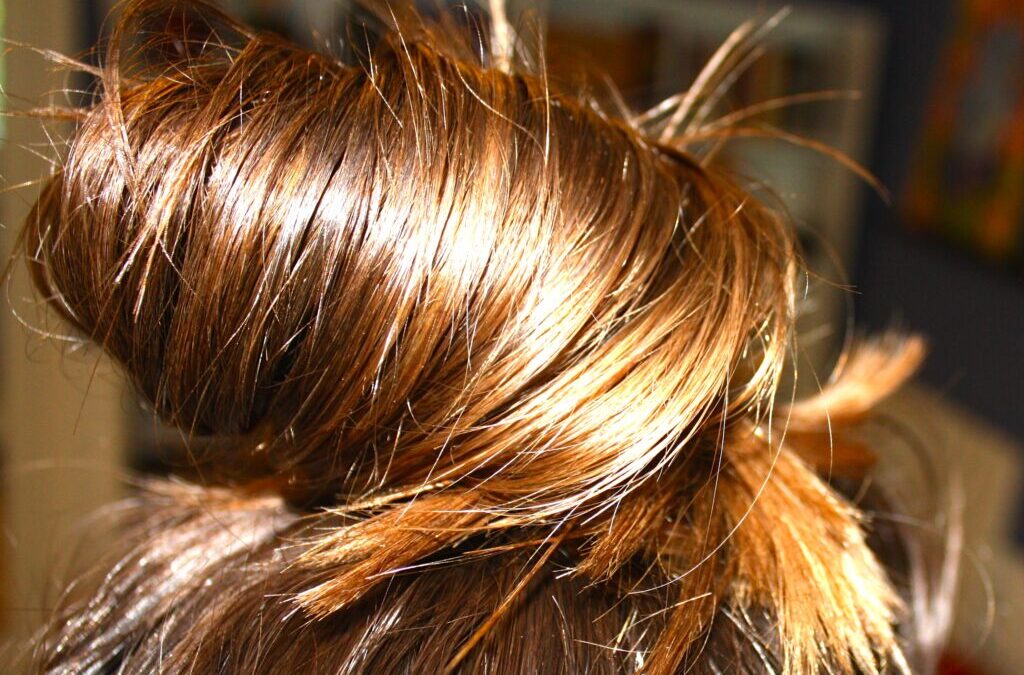
by Dr. Talia Marcheggiani, ND | May 16, 2015 | Autoimmune, Beauty, Diet, Digestion, Education, Food, Food Sensitivities, Hair, Health, Hormones, Natural Body Care, Nutrition, Self-care, Women's health
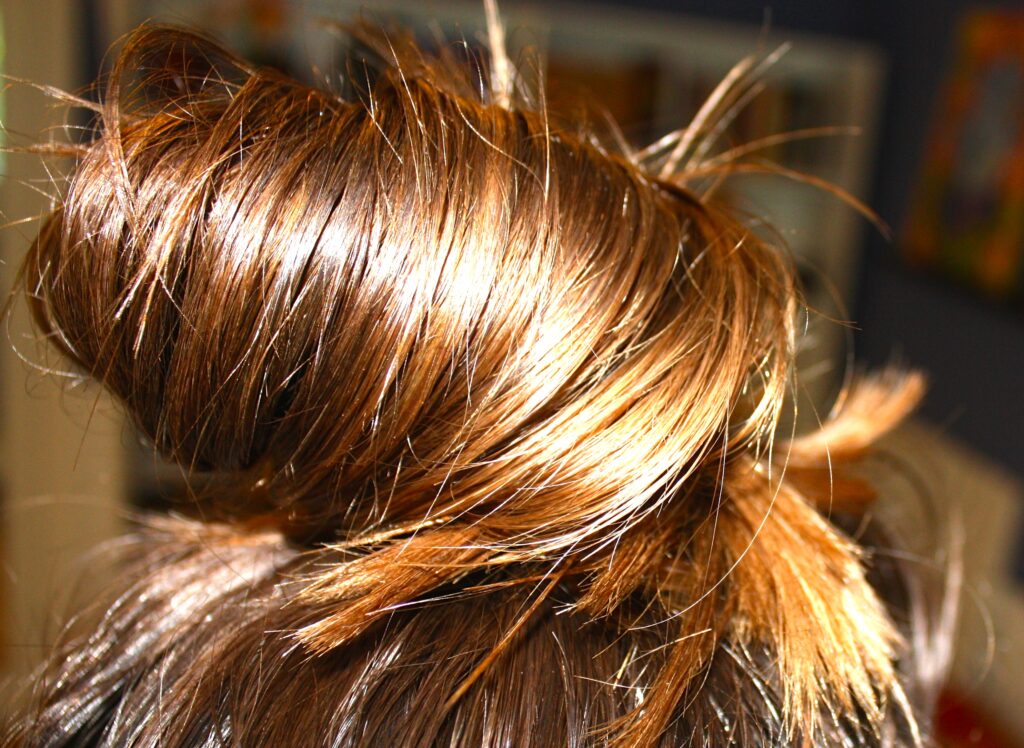 This is likely one of the shallowest posts I’ll ever write—it’s about hair. However, what is so shallow about hair? We all know the importance of having a good hair day. It seems from the moment we wake up, look in the mirror and notice that our top bun has left proper, succulent waves and not weird, irregular angles of frizz, that the rest of the day will be infused with magic. Our hair plays a huge role in who we are and how we see ourselves. When movie characters want to change their identities, the first thing they do is stash themselves in a truck stop bathroom with a box of hair dye and go to town on their manes. Further, and admittedly sticking to the shallow side of things, I’m often suspicious when every photo of a man on Ok Cupid shows himself wearing a hat—what on earth is he hiding? At any rate, concerns about hair health gets people, namely women, into my office. Sometimes seemingly shallow, trivial health concerns act as gateways to lifestyle changes and a journey to health and wellbeing. Since our bodies don’t really require hair for survival, hair health, along with sex drive and energy, is one of the first things to decline when we enter into a state of imbalance. It therefore becomes an important initial warning sign that things have gone array with our health.
This is likely one of the shallowest posts I’ll ever write—it’s about hair. However, what is so shallow about hair? We all know the importance of having a good hair day. It seems from the moment we wake up, look in the mirror and notice that our top bun has left proper, succulent waves and not weird, irregular angles of frizz, that the rest of the day will be infused with magic. Our hair plays a huge role in who we are and how we see ourselves. When movie characters want to change their identities, the first thing they do is stash themselves in a truck stop bathroom with a box of hair dye and go to town on their manes. Further, and admittedly sticking to the shallow side of things, I’m often suspicious when every photo of a man on Ok Cupid shows himself wearing a hat—what on earth is he hiding? At any rate, concerns about hair health gets people, namely women, into my office. Sometimes seemingly shallow, trivial health concerns act as gateways to lifestyle changes and a journey to health and wellbeing. Since our bodies don’t really require hair for survival, hair health, along with sex drive and energy, is one of the first things to decline when we enter into a state of imbalance. It therefore becomes an important initial warning sign that things have gone array with our health.
If you’re someone who sees hair not just as a superficial aspect but as a reflection of your identity and well-being, then delving into the world of dreadlock classes could offer a transformative experience. Consider exploring the comprehensive resources available at https://dreadlockcentral.com/courses/. These courses provide a deep dive into the art of dreadlock maintenance and styling, empowering individuals to cultivate a strong sense of self-expression and confidence through their hair.
Just as concerns about hair health can serve as a gateway to overall well-being, mastering the art of dreadlocks through these classes can become a catalyst for positive lifestyle changes and self-discovery. Whether you’re looking to embrace your natural texture or make a bold statement with your locks, the knowledge and techniques gained from these courses can help you achieve your hair goals while also fostering a deeper connection to yourself and your personal journey of health and wellness. So, if you’re ready to explore the transformative power of dreadlocks and embark on a journey of self-discovery, consider enrolling in dreadlock classes today.
When it comes to expressing individuality and embracing a holistic approach to personal style, integrating human bulk braiding hair into your dreadlock journey can elevate your hair aesthetics to new heights. This premium hair product not only enhances the volume and texture of dreadlocks but also offers a natural look and feel that complements diverse hair types and styles. Whether you’re aiming for thicker, more defined locks or experimenting with intricate styles like braids and twists, bulk human hair provides the versatility and quality necessary to achieve stunning results that align with your unique vision. By using high-quality human hair, you ensure durability and manageability while promoting the longevity and vibrancy of your dreadlocks.
This approach not only enhances the aesthetic appeal of your hairstyle but also contributes to your overall sense of well-being and confidence in your appearance. Embracing these advanced techniques and materials not only expands your creative possibilities but also reinforces a deep connection to your identity and self-expression through the transformative power of hairstyling.
Hair holds a significant place in our self-perception and daily routines, often influencing our confidence and identity. When hair health falters, whether due to genetics, hormonal changes, or lifestyle factors, individuals may seek solutions like Hair Restoration Therapy to regain a sense of normalcy and well-being. This therapy, offered by a specialized plastic surgeon, aims to address hair loss and promote regrowth through various techniques such as laser therapy, PRP (Platelet-Rich Plasma) injections, or surgical procedures like hair transplantation. Interested in laser treatment? Check out the moxi laser before and after here! While the desire for lush locks may seem superficial to some, it often serves as a catalyst for deeper introspection and lifestyle changes, underscoring the interconnectedness of physical appearance and overall health.
Hair loss is often a concern for many women and men. It’s normal to notice a few strands of hair in the shower—the average woman loses about 50 to 100 strands of hair per day. However, when patches of hair seem to be missing, areas of thinning are present or a reduction in overall hair volume (usually indicated by a decrease in thickness of the pony tail), this can point to possible pathological hair loss.
In the quest to address concerns about hair loss, the choice of shampoo becomes a crucial element in maintaining scalp health. Opting for a sulfate free shampoo for oily scalp emerges as a thoughtful strategy to navigate this common challenge. This type of shampoo not only gently cleanses the hair but also ensures that the scalp’s natural oils are preserved, striking a balance that is particularly beneficial for those experiencing issues like thinning or reduced hair volume.
While losing a few strands daily is normal, unusual patterns of hair loss can signal pathological conditions that may require medical attention. For those seeking effective solutions, advancements in the field of hair restoration, such as hair transplant procedures, have become increasingly popular. In Seattle, individuals concerned about hair loss often explore options like hair transplants, which can provide a natural and lasting solution to restore hair density. It’s essential to consider factors such as seattle hair transplant cost along with the expertise of professionals to make an informed decision about addressing hair loss concerns. Seeking appropriate medical advice and exploring suitable treatments can help individuals regain not only their hair but also their confidence and overall sense of well-being.
History and Labs:
When coming in to see your naturopathic doctor, he or she may ask you the following questions:
Do you notice any itchiness or flaking of the scalp? These symptoms could indicate a number of skin conditions of the scalp that contribute to hair loss: seborrheic dermatitis, infection by a fungus called Malassezia furfur that causes dandruff, or psoriasis of the scalp, an autoimmune condition. The ND may diagnose via trial-and-error or perform skin-scraping to rule out a fungal infection. A skin biopsy may be indicated to provide a definitive diagnosis, however this test is invasive.
What do you labs look like? Comprehensive lab work is necessary in patients with hair loss. It’s important to see what iron status is, as well as thyroid health. Low iron or under-functioning thyroid can be the root cause of hair loss as can high androgens, the male sex hormones.
Which medications are you taking? Oral contraceptives can cause a deficiency in vitamins and minerals, such as zinc and B vitamins, that can cause hair loss. Other medications that can cause hair loss include, and or not limited to, blood pressure medications, antidepressants, antibiotics, acne medications, chemotherapeutics agents, immunosuppressants and pain medications. An ND can work with your doctor to decrease your list of medications by addressing the root cause of concerns, if possible, or collaborate in switching medications. This, of course, will only be done in collaboration with the prescribing doctor.
What’s bugging you? Stress can contribute significantly to hair loss. The mechanism of action is varied, but a decrease in circulation to the scalp, protein deficiency and depletion of vitamins used by the adrenal glands, can be possible causes of hair loss. Telogen effluvium is a condition where the body pushes the hair follicles into a “resting phase” so that they no longer grow and produce hair. This is done because when under stress, the body enters survival mode and does not dedicate precious resources to non-survival entities such as hair health. Alopecia areata an autoimmune condition in which the immune system of the body attacks the hair’s follicles, causing large patches of hair to fall out. This is said to be cause or aggravated by severe stress. Trichotillomania is a mental health condition in which the individual plucks out hair as a self-soothing mechanism.
What are you other symptoms? Weight gain, irregular periods, acne and hair growth on the face can indicate PCOS, which also can cause loss of scalp hair due to higher-than-normal testosterone levels. Men with high testosterone will also experience more hair loss. Digestive symptoms can indicate malabsorption of important fat-soluble vitamins or iron, which can contribute to hair loss if resulting in deficiency.
What hair products do you use? A sensitivity to sulphates and/or other chemical additives to hair products can contribute to hair loss or a decrease in the lustre and overall health of hair follicles.
Treatment:
The naturopathic treatment for hair loss, involves identifying and treating the root cause of symptoms, not the hair loss itself. A potential treatment plan might consist of the following:
Restoring health by replenishing depleted or deficient vitamins and minerals.
Eliminating infection or scalp fungus if necessary.
Managing stress in healthy, constructive ways.
Balancing hormones and the immune system via herbs, supplements and dietary changes.
Nourishing the hair by adding in vitamins that support hair health, such as fish oil. This also involves changing shampoos and conditioners to more natural, sulphate-free forms.
Castor oil hair mask:
Once a week, when my hair starts looking drier and duller, I do a castor oil hair mask and scalp massage. Castor oil is an anti-fungal and anti-inflammatory oil. It has the added benefit of increasing blood flow to the area it is applied to, in this case the scalp, which can increase hair growth. It is also a wonderful moisturizer and nutrient-rich hair supplement. It can help fuse together and moisturize split ends. Performing a self-scalp massage is a great way to increase body love by performing self care and has a grounding effect on the body, which reduces mental-emotional stress.
Apply a liberal amount of castor oil to palms. Rub oil into palms to warm it. Starting at the scalp, work oil into the hair follicles, applying a firm pressure and moving the fingertips in circles. Massage for 5 minutes, moving the oil through the shaft of the hair to the ends. After performing massage, leave oil in hair for at least an hour or overnight. Finally, shampoo and condition hair as usual to remove oil. Warning: castor oil can stain fabrics so sleep with an old pillowcase and wear an old t-shirt while performing castor oil scalp massages.
Epilogue: If you haven’t noticed, this seemingly shallow subject matter is the perfect segue into talking about a basic naturopathic approach, which involves taking a thorough history, ordering lab work to find the root cause of symptoms and then treating accordingly using non-invasive therapies that aim to treat the cause, not just the symptoms themselves. Notice how this is vastly different from walking into a supplement store and purchasing a product called “Hair Loss Formula” or some other facsimile. While this formula may replenish some deficient vitamins, it is masking the real cause, which may be PCOS or celiac disease, and delay effective treatment for these conditions. Hopefully this highlights the importance of seeking a professional opinion rather than self-diagnosing and self-prescribing!

by Dr. Talia Marcheggiani, ND | May 8, 2015 | Balance, Canadian College of Naturopathic Medicine, Clinic, doctor as teacher, Emotions, Finding yourself, Personal, Reflections
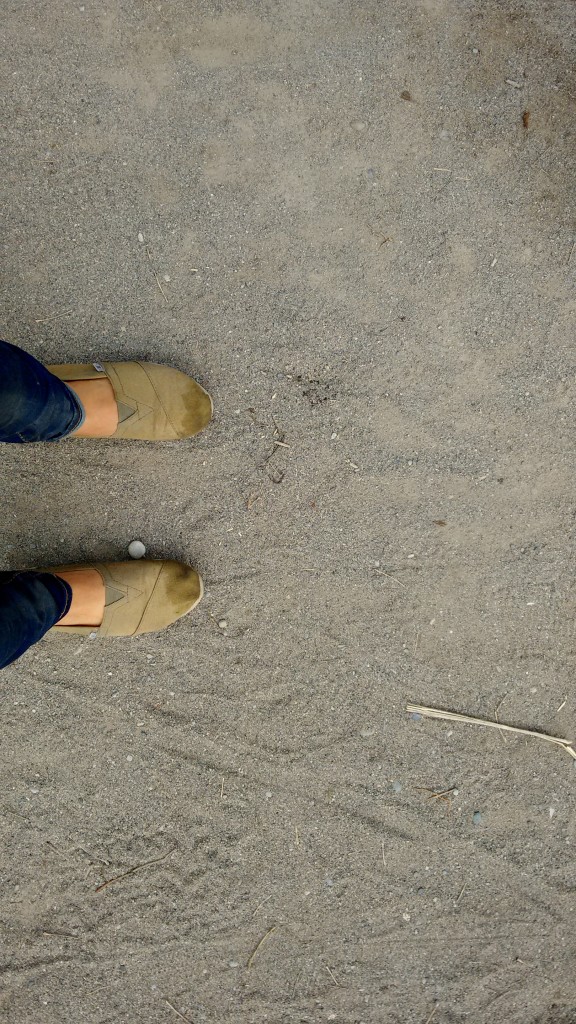 It seems like the only thing I can focus on right now is negative space.
It seems like the only thing I can focus on right now is negative space.
Like the obsession with the space between a model’s waif-like thighs, affectionately termed the “thigh gap”, I have seemingly been attributing way too much time and attention to the lack of things in my life. Life is up in the air right now—a freeze-frame of dust particles that someone has stirred up, and we all wait breathlessly to see where they will settle on the ground.
That’s it: I feel unsettled.
And this unsettled feeling has the tendency to sharpen the focus on the things I don’t have in life. The search doesn’t need to go far. I lack stability in my career, a romantic relationship, my own apartment—the typical signs that life is moving forward. I don’t know what two months will bring, let alone the next few years and, as someone who spent all but two years of their waking adult life in academia, not having a future laid out before them in the form of assignments, tests and other externally imposed milestones leaves me feeling uncontained. There is no one conducting evaluations on my life but myself.
And what an astute evaluator I’ve become:
How am I doing? The best way for the masochist to answer this question is to look at how other people are doing. There are plentiful points of comparison if I want to feel fully inferior. Everyone seems to have more patients than I do, nicer apartments and fulfilling relationships. They seem to be moving somewhere. I just feel stuck, not at a crossroads, but at the edge of a cliff. Am I just supposed to jump? Did everyone else jump? Or did they end up hitching a ride on some lucky parachute that happened to pass by a few minutes before me? Why are they lucky? What are my eyes closed to? When will it be my turn? Or am I simply cursed? The mind stirs up more dust. Sense of personal injustices prevail.
This unsettled feeling can’t last.
So I strive. The answer must lie in working harder. After all, it’s what we’re told to do. Push on. Move forward. Just do it, as Nike says, sweat beading on foreheads. There’s always sweat beading on the foreheads of the mentally unsettled.
I hand out business cards, but no one calls me. I try calling them. I look for other jobs that are poor fits. I take more shifts at the day-job I’m holding on to for secure cash. I go to business networking meetings that I don’t connect with and try to convince myself that I should just force myself to make it work. I search desperately for an apartment, and despair when I don’t get the one I finally love. I hold on to past relationships well past their due dates and complain and obsess and analyze what went wrong to my friends, whose patience can’t possibly last much longer. I notice myself compromising my values and dreams in order to get away from the edge of the cliff.
Still I get nowhere.
So I turned to the only thing I know how to when the mind is desperate and despairing and the spirit is looking to the future for salvation—I turn to the present. The dust in up in the air, so to speak. Everything is unsettled. And yet, how am I? I’m more or less alright. I’m warm. I’m fed. I’m rested. My plight is ridiculous when compared to tiny Vietnamese hands sewing buttons on Banana Republic blouses. Who taught me this sense of entitlement?
I have a place to live and some money coming in (the longer it takes me to find an apartment, consequently, the more I end up saving). I have friends who are genuinely concerned about me and a generous, loving and supportive family. I have hobbies and social events to attend. The blessings in my life are numerous.
Why am I so intent on speeding down the highway of life? What will happen when I arrive at my destination? When I have a beautiful apartment, patients booked months in advance, when I’m in a wonderful, loving and passionate relationship with someone who inspires me, what will I do then? Once the dust is settled, won’t I eventually, decide to stir it up again? If I can’t be content in the present, when will I ever find that elusive contentment that always seems to slip out of our grasp?
Most of all, I ask myself, what is behind my longings? Are the reason I long for these things pure? Or, like a perfume or Coca-Cola ad, do I really want what’s behind what they’re selling me: the beauty, enchantment, lightness, freedom and magic that life often promises us but we seldom encounter in the places we’re told to look.
I wonder if, with eyes closed and mind settled, I’ll be able to breathe clear air again. Perhaps then I’ll find a path down from this cliff, a creative alternative to the already available options: jumping, backing down or sitting and waiting for a magical parachute to come and save me.
Between all the wants, needs, dreams and aspirations, between the striving is space. In that space I might find a little room to breathe. But who can really breathe with dust in their lungs?
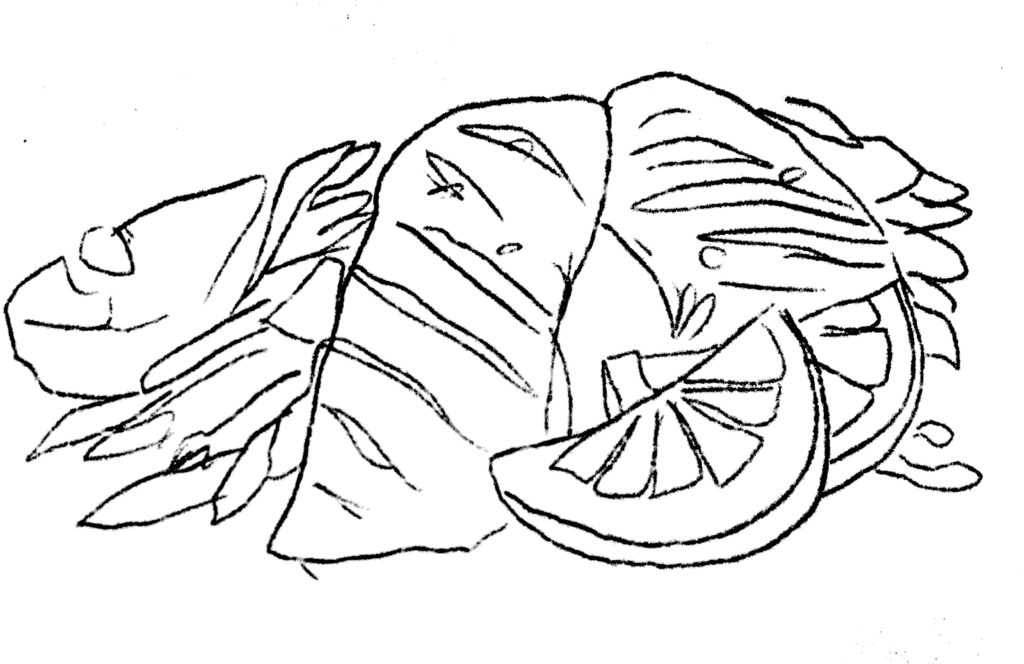
by Dr. Talia Marcheggiani, ND | Apr 21, 2015 | Botanical Medicine, cancer, Detoxification, Diet, Endocrinology, Fertility, Food, Health, Mental Health, Nutrition, Skin health, Weight Loss, Women's health
 Estrogen is the dominant female hormone. It is actually a group of hormones, called the estrogens, that are responsible for the development of female secondary sex characteristics: the development of breast tissue and the proliferation of the uterine lining. Estrogen helps prepare the body for ovulation. Not all estrogens are created equal, however. Some estrogens are associated with an increased risk of certain female cancers, such as breast cancer.
Estrogen is the dominant female hormone. It is actually a group of hormones, called the estrogens, that are responsible for the development of female secondary sex characteristics: the development of breast tissue and the proliferation of the uterine lining. Estrogen helps prepare the body for ovulation. Not all estrogens are created equal, however. Some estrogens are associated with an increased risk of certain female cancers, such as breast cancer.
Excess estrogen, especially in the form of these so-called “bad” estrogens, seems to be a common theme among women in North America. Stress, caffeine intake, synthetic estrogens in birth control pills and hormone replacement therapy and xeno-estrogens from cleaning products, plastics and cosmetics are among some of the causes of excess levels of estrogen in the body. Because of these environmental factors, many women suffer from something called “Estrogen Dominance”.
Symptoms of estrogen dominance include stubborn weight gain, anxiety, premenstrual symptoms of breast tenderness, acne, irritability, fatigue and brain fog. Estrogen dominance can contribute to worsening of health conditions such as infertility, fibrocystic breasts, repeated miscarriages, uterine fibroids and endometriosis as well as increase the risk of developing certain cancers.
Estrogen detoxification can be done effectively through a healthy diet that aims at improving estrogen clearance in the liver and regulation of the action of estrogen at cell receptors. By following this diet, patients can experience an improvement in hormonal health conditions, clearer skin and weight loss.
This diet is adapted from Dr. Joseph Collins RN, ND at yourhormones.com.
Cruciferous vegetables: Vegetables from the cabbage family, such as cabbage itself, cauliflower, broccoli, brussel sprouts, kale, bok choy, spinach, collard greens and other leafy greens are rich in a nutrient called indole-3-carbinol, or I3C. I3C gets converted to diindolymethane (DIM) in the body, which is responsible for clearance of excess estrogens in the liver. Consume a minimum of 3-4 servings of these vegetables per week.
Rosemary: Rosemary, when added to meats as a seasoning enhances the formation of good estrogens (the ones less likely to cause cancer or health concerns). Rosemary has the added benefit of antioxidant activity. It also enhances memory and mood and helps with thyroid function, improving weight loss, metabolism and energy levels.
Flaxseed: 2-4 tablespoons per day of ground flaxseed promotes healthy estrogen metabolism. The seed contains lignans, which help clear excess estrogens from the body. Flax also contains phytoestrogens, which control how much estrogen can bind to estrogen receptors. This means it can decrease excess estrogen activity or increase deficient estrogen activity, making it an effective remedy for a variety of female health complaints. Flax is rich in healthy omega-3 fats and contains fibre, making it an important remedy for treating inflammation and constipation. Flaxseed is digested and absorbed when ground, and best stored in the fridge as the oils in the seed quickly go rancid at room temperature.
Salmon and other fatty fish: Salmon and other fatty fish contain EPA, an omega-3 fatty acid, is an important anti-inflammatory oil. It has been shown to be effective in treating inflammatory conditions, cardiovascular disease and mental health conditions, such as depression, anxiety and ADHD. It helps increase the formation of “good” estrogens in the body. Enjoy 2-3 servings of fatty fish per week, or supplement with a quality fish oil.
Isoflavones: Isoflavones, such as those found in soy, are antioxidants effective at increasing good estrogens in the body. Since soy is often heavily processed, using herbs such as Trifolium pratense, Pueraria montana and Pueraria lobata either in teas, capsules or tinctures, will help provide an adequate dose of isoflavones.
Activated folic acid: Folic acid is responsible for converting estrogen into a very healthy, methylated form that can decrease the risk of certain cancers. Many people are unable to convert folate into the active 5-methyltetrahydrofolate, which is essential for hormone metabolism, DNA synthesis, homocysteine metabolism and nervous system function (good mental health, memory and energy). Other B vitamins to supplement with are B6 and B12 as they help folic acid metabolism estrogen into their anti-cancer form. Folic acid is found in dark leafy greens, which also contain your daily doses of indole-3-carbinol.
If you are experiencing symptoms of estrogen dominance in the form of a female health complaint, book an appointment to learn what else you can do to experience healthy, happy, pain-free periods and look and feel your best. Contact me.
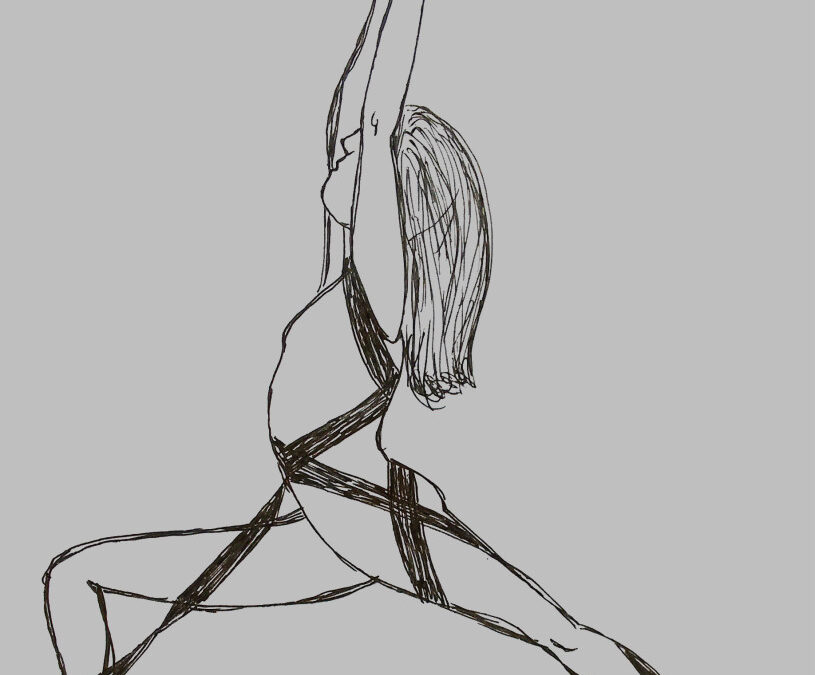
by Dr. Talia Marcheggiani, ND | Mar 31, 2015 | Alignment, Balance, Beauty, Chronic pain, Exercise, Fitness, Health, Mind Body Medicine, Physical Medicine, Yoga
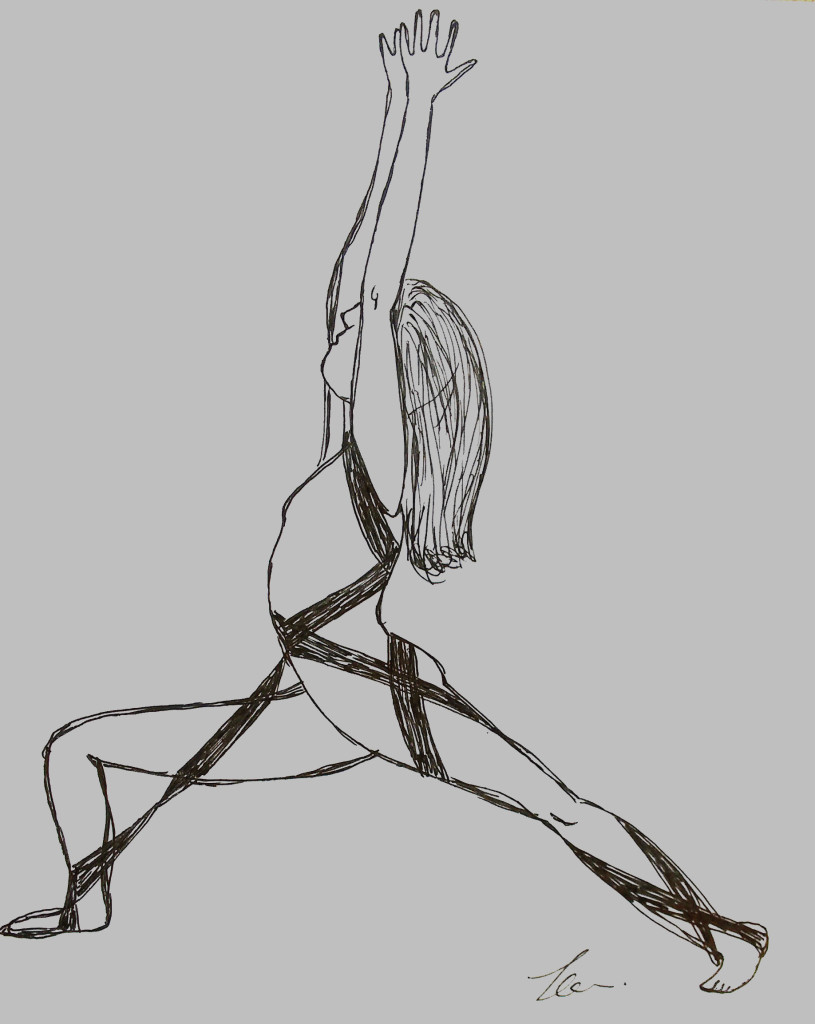 When you go through an upsetting breakup with your boyfriend, the thing to do, apparently, is attend an Ecstatic Dancing workshop. The friend who invited me didn’t say much about it, except that it was, “a place to dance without being hit on.” Apparently the practice would cleanse my aura and allow me to vibrate with the rhythms of the universe. So, I thought, why the heck not.
When you go through an upsetting breakup with your boyfriend, the thing to do, apparently, is attend an Ecstatic Dancing workshop. The friend who invited me didn’t say much about it, except that it was, “a place to dance without being hit on.” Apparently the practice would cleanse my aura and allow me to vibrate with the rhythms of the universe. So, I thought, why the heck not.
The Facebook invite hilariously clarified the tone of the event with their tag: “No alcohol, no drugs, no talking. We dance barefoot.” I took a sip of my wine and clicked “Going”. I was sold.
I showed up wearing yoga clothes and a tunic I got from India so I would fit in. My friends and I were greeted by girls wearing headbands whose faces were frozen in an expression of ethereal ecstasy, as if they’d just heard white angels whisper in their ears. They cleansed our chakras with a sage smudging and offered us “elixirs” of green tea kombucha. I was in over my hippie head—it was exactly the kind of weird I needed.
We entered a church gym full of people wearing flowing clothing who were gaily unleashing their spirits to music. I became acutely aware of not knowing what to do with my hands. A girl there with wild, frizzy hair and a long sheer robe was twisting and turning like a branch in the wind. It was like she had no bones. She looked like a goddess. I remember thinking that, if I could dance like her, I would consider myself well on my way to spiritual integration.
Instead, my body seemed to be at the mercy of 29 years of awkward repression and self-resistance, most of which I carried in the form of muscle tension. However, I tried to overcome the trauma of grade 6 dances and let myself succumb to the barefoot madness. I let my body pulse to the music as best I could. I felt free.
There were a group of girls who obviously frequented these kinds of events, wearing what looked like thick elastic bands that wrapped around their torsos and legs. One of the girls in the group was built like a princess warrior. Her body was pure sinew and bones. She was doing something that looked like graceful backward cartwheels, her face a picture of calm focus. I wanted to be like her when my spirit grew up.
When the no talking rule was lifted, I approached her to find out her secret. I imagined it had something to do with the elastic bands she was wearing. Maybe they bore the secret of why she was so present in her physical body. (I’m sure it had nothing to do with the years of yoga practice she’d committed to). “It’s called the Body Braid,” She told me, when I asked what she was wearing. “It helps you maintain proper alignment. I wear it for an hour everyday and since getting it, it’s helped transform my body.”
While I wasn’t sure what her pre-braided body must have looked like, I wanted a piece of this alignment and freedom for myself. I wanted my body to transform! She looked like she was wrapped in a cushy elastic hug. Her shoulders were back and not curving inwards like mine tend to. I instinctively raised a hand to my left shoulder to massage out a constant knot I’d lugged around since my first week of medical school.
Alignment matters. Having a toned, healthy body requires our bones and muscles to be in the right place. If they’re not, which happens due to improper posture, repetitive movements, incorrect footwear and, of course, excessive sitting, we experience tightness, pain and an overall poor-looking physique. You’ve seen it before: slouched shoulders, a bend at the hips, neck craning forward—not very sexy. Alignment helps with lymphatic drainage and proper circulation. It helps with muscle toning. This braided yogi I was talking to was perfectly aligned. She looked like she was ready to pick up a spear and tear after a zebra through the savannah. I imagined her climbing trees, dancing freely under the stars and doing backflips on a whim. Standing next to her I felt doughy and slouchy in comparison. I didn’t like the feeling.
I wanted the Body Braid.
I found it on the internet for under $100. It was made in Canada and developed by a medical doctor. I immediately ordered one and a few weeks later it arrived. I figured it was cheaper than a series of massages.
The body braid is made of two intersecting elastic bands in black or white that are about 5 cm wide. The straps can be adjusted and are sized according to your height. An instructional video on their website shows you how to wrap the braid around your body with 4 wraps on each side, one under each arm, one around the hips, behind the knee and around the shin. The end of each wrap is secured under the feet like a stirrup.
Once I was finished wrapping myself in, I felt my shoulder press back, my thighs straighten and the arches of my feet lift.
I liked the buoyant, uplifting feeling. It was teaching my body how to be—I was hooked.
I had a date that night and seriously considered either cancelling or wearing the thing out to the bar. Both those options seemed far superior to separating myself from this magical feeling of elasticity and buoyancy. (I eventually did remove it to go on the date, but probably shouldn’t have bothered. Next time I know: always prioritize posture.)
Since buying it, I’ve worn it for yoga classes, exercise, going out for walks and sitting at the computer.
My postural goals are to align my shoulders and take some strain off of my lower back. I want to feel integrated and connected to my body. In the cerebral world we live in, our bodies are often simply viewed as tools to carry our skulls around. The Body Braid is helping to connect all the parts of me: physical, mental and emotional.
For more information: bodybraid.com
*Body Braid did not endorse me to write this blog. However, I really wish they had.
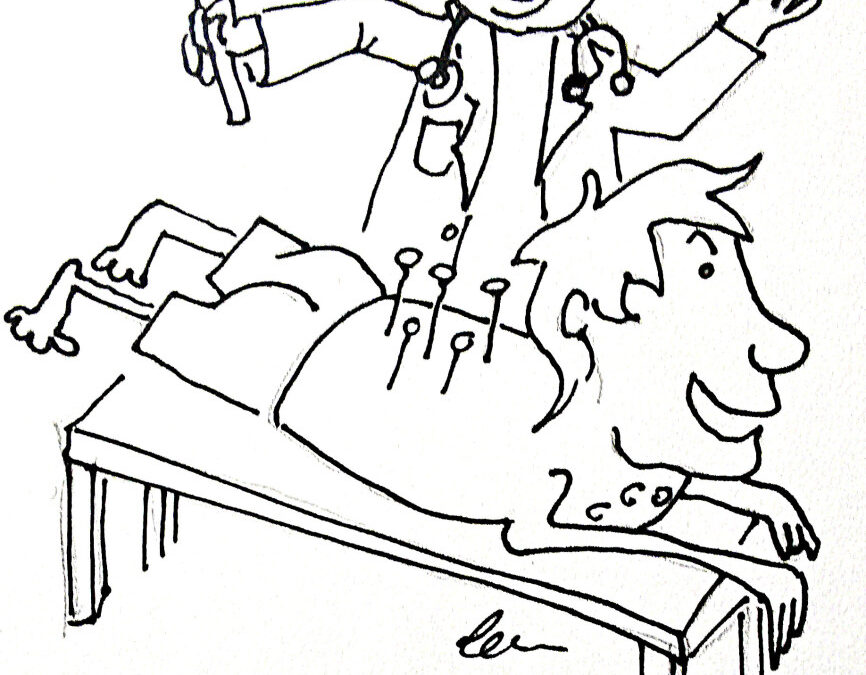
by Dr. Talia Marcheggiani, ND | Mar 24, 2015 | Balance, Diet, Digestion, Docere, Education, Fitness, Food, Health, Naturopathic Philosophy, Naturopathic Principles, Nutrition, Preventive Medicine
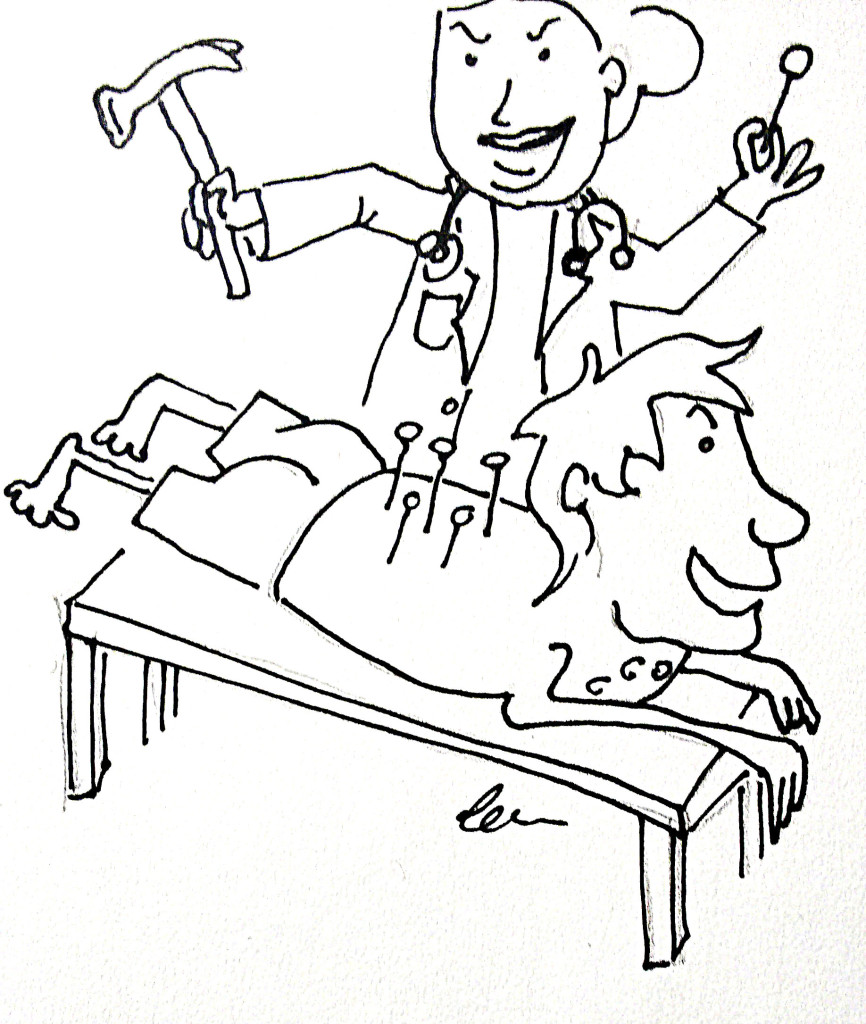 Many health complaints are common, but not normal.
Many health complaints are common, but not normal.
“I take migraine medicine everyday,” boasted L. She then went on to describe her plenitful medicine cabinet that, at the age of 23, she’d stocked quite well. “I get headaches when the weather’s bad, when I forget my glasses, when I’m hungry-” she went on. I repressed my immediate impulse to give her a list of supplements she could take and dietary changes she could make to never have another headache again, and simply said, “Well, L, you know I have a practice in the West end. If you want any more support…You can call—”
“—No, I’m good”, she responded, hurriedly. “I just need to find out how to get more of my medication.” The medication she referred to was high dose acetominophen, or Tylenol. She was taking 1 g pills and her doctor had told her that she could dose up to 4 g per day. Since 4 g will cause immediate liver failure, I was happy to learn she hadn’t needed to get that high… yet. What’s more, she wasn’t treating the cause of her condition. She was just addressing the symptoms, and consequently negatively affecting her health.
To use the car dashboard analogy, when your fuel light comes on and makes a noise while you’re driving on the highway, what do you do? Most people, without giving it another thought, will pull over to address the root cause of the chaos by adding more gas to the car. Very few of us will take out a hammer and smash the dashboard in. In fact, most of us cringe at how ridiculous the thought is. Imagine the entire naturopathic community cringing when they hear about someone swallowing several grams of Tylenol to smash out their migraine.
Pulling the car over to refuel and smashing the dashboard both serve to stop the annoying blinking and beeping of the fuel light. One of them is addressing the root cause and actually paying attention to what your car needs. The other is, well… I’ll let you come up with an appropriate adjective.
So this begs the question: why do we insist on smashing our symptoms away? The fuel light may be annoying, but drivers value its presence as a tool to let us know that we need to refuel lest we end up stranded on the highway without gas. The blinking light lets us know what is going on inside our car.
Why don’t we view our body’s symptoms in the same way?
I have patients who think that their depression is a part of them, or that the painful distention under their belly buttons after eating is “normal”. Sometimes we identify with our physical ailments to the point where they define us, as if it’s our lot in life to have acne or poor digestion or to be overweight—it’s not.
Dandruff, painful menses, seasonal allergies, aches and pains are not “normal.” Sure, they’re common. No, they don’t necessarily mean you have some life-threatening disease, and therefore your family doctor probably doesn’t have a reasonable solution for them, besides smashing at them with the hammers in their toolbox from time-to-time.
When I saw my first ND, I was excited at the idea that, even though my doctor assured me that the random, annoying symptoms I was suffering from were “normal”, they were in fact not normal and something could be done about them. From the ND’s standpoint, the symptoms were an indication of budding imbalances and treating them was preventing more serious conditions down the line. Feeling cold all the time and excessively full after meals weren’t just annoying symptoms, they were important messages from my body that things weren’t all right and that something needed to be done.
Is there an annoying symptom you’ve been experiencing that you’ve come to accept as something you just have to live with?
Contact me to find out what we can do about it!

















